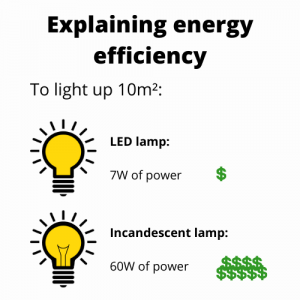Over the years, the need for energy has increased and becoming more indispensable for humans. Data from the National Energy Balance for 2023 shows an increase of 2.3% in the demand for energy, mainly electricity power, as can be seen in the figure below.
Figure 01: Data from the National Energy Balance 2023

The increase in demand for electricity makes it necessary to look for energy efficiency measures. Energy efficiency consists of optimizing energy consumption, that is, reducing energy consumption while providing adequate lighting, temperature, etc.
Figure 02: Exemplifying energy efficiency

Given this scenario, this extension project aims to evaluate the potential of using monitoring, automation, and lighting control systems in commercial buildings in Santa Catarina, integrating natural and artificial lighting efficiently.
Natural lighting consists of the insertion of sunlight into environments, while artificial lighting consists of using lamps, consuming electricity and resulting in costs. The most energy-efficient strategy from the point of view is to integrate natural and artificial lighting, with artificial light being used at times when natural light is not sufficient. Through this strategy, it is possible to reduce waste and maintain visual comfort for the user.
Figure 03: Examples of lighting


Therefore, this project aims to assess the current lighting conditions in commercial buildings located in southern Santa Catarina. From this in situ analysis, information will be obtained about the lighting energy efficiency conditions of the establishments. This diagnosis will also allow us to verify the potential for using automatic systems for efficient control and lighting monitoring. This project’s actions impact the reduction of electricity costs, which is of great importance, especially for small business owners, and also enable an increase in sustainability in commercial buildings.
To achieve the proposed objectives, the steps of the project are divided into:
- Mapping of the buildings
- Data collection: dimensions and illuminance
- Analysis and diagnostics regarding day lighting and artificial lighting
- Individual reports presenting potential points for improvement, as well as their technical and economic feasibility
From this, it is expected to contribute to improving the lighting quality in the environments, with the development of monitoring, automation and control systems and with the sustainability of the regional commercial buildings.













